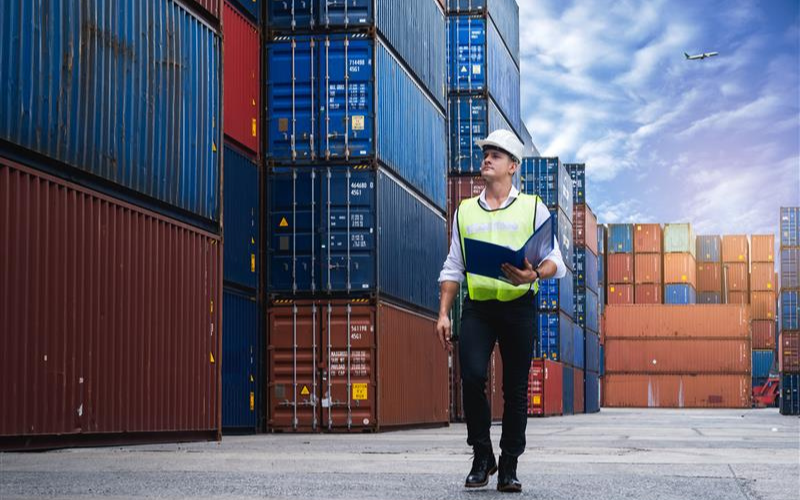Update: U.S. President Donald Trump said in a Truth Social post on Wednesday that he would reduce the new tariffs back down to the 10% baseline for all countries for a 90-day period except China, which will now receive an increased rate of 125%, effective immediately. The new baseline tariffs do not apply to Canada or Mexico, per the New York Times.
Outdoor Industry Association (OIA) hosted a webinar about the new tariffs for members and non-members on Tuesday to solicit input from the industry to help with advocacy efforts, provide clarity on what the new rules mean, and brainstorm ways of mitigating their impact.
Ron Sorini, a principal at Sorini, Samet & Associates LLC, said on the webinar that even though U.S. President Donald Trump talked about reducing trade deficits during his campaign, he was surprised at the broad scope of the tariffs that have gone into place.
“I find it hard to comprehend why we’re trying to deal with trade deficits, but we then put tariffs on countries we have trade surpluses with, which happened in many cases,” he said. “That’s a little counterintuitive.”
Despite the severity of the tariffs, he warned those on the call not to react too swiftly. They were implemented quickly and Sorini believes Trump will negotiate deals with several world leaders, which could mean things will change again soon.
“I’ve never seen such a period of volatility, uncertainty,” Sorini said. “And hopefully this goes by fast, and we don’t come through another period like this again.”
Country-Specific Tariff Rates
Megan Costello, vice president, trade and customs policy at Sorini, Samet & Associates, said it’s important to remember that the new tariffs are in addition to tariffs that have already been levied. That means it’s important to look at the specifics for the countries from which products are being sourced.
Since February, there have been several executive orders calling for tariffs on products. Initially steel and aluminum along with some products from China, Canada, and Mexico were targeted based on national security and concerns about fentanyl. The subsequent “Liberation Day” tariffs were aimed at reducing trade deficits and add further complications and expenses to businesses.
A 10% tariff went into place on Saturday night for all countries. A country-specific rate went into force on Tuesday. By Wednesday, however, Trump said those country-specific rates would return to 10% except for China, where the reciprocal rate will now be 125%.
It’s not yet clear if that is in addition to the 7.5% that went into effect before Trump took office as well as in addition to the 20% implemented in February.
Adding to the confusion, Costello said yesterday that additional tariffs from the Trump administration have been threatened, but not actually implemented. Similarly, Secretary of State Marco Rubio has discretion to apply 25% tariffs on any country that is buying oil from Venezuela, but that hasn’t been implemented.
“No action has been taken, and I don’t want to predict if or when it will happen, because we, frankly, just do not know,” Costello said.
Tariff Exemptions
Certain products are excluded from the new tariffs. They include products subject currently to Section 232 tariffs and those that are under investigation for potential 232 actions, such as pharmaceuticals, lumber, copper, semiconductors, and aluminum and steel derivatives.
“And when I say exempt, I truly mean exempt,” Costello said. “If you have aluminum in a camp stove, you are not going to pay the reciprocal tariffs as of now.”
The tariffs also only apply to materials that are not U.S. sourced, provided the product has 20% or more of those materials.
“So if you’re making something in the United States, exporting it for further processing and assembly or what have you, and then re-importing it, you could then deduct that from the tariff, provided that it’s 20% or more of the product’s value,” Costello said.
Lastly, if product was loaded onto a vessel before April 5, then the 10% tariffs levied on April 5 will not apply. If product was loaded by April 9 and entered into U.S. Customs by May 27, then only the 10% applies, outside of China.
De minimis entry, which removes any taxes, duties, and levies for products that are $800 or less, will no longer be allowed for products from China as of May 3. The Trump administration said it plans to eliminate de minimis for all countries once it has infrastructure to collect those fees.
How to Help
OIA is soliciting input about how tariffs will impact the outdoor industry so that they can demonstrate to legislators what the effects of tariffs will be with real-world experiences. To send details to OIA about your company, fill out the form linked here.
Sorini also said that because Trump is negotiating with some countries to reduce trade deficits, he is demanding that these nations commit to buying American made goods such as Boeing aircraft or U.S. agricultural products.
“You want to make sure that your products are a key part of those negotiations,” Sorini said. “We want those products to be outdoors, so dialogue with your suppliers is absolutely critical.”
Kate Robertson can be reached at kate@shop-eat-surf-outdoor.com.






